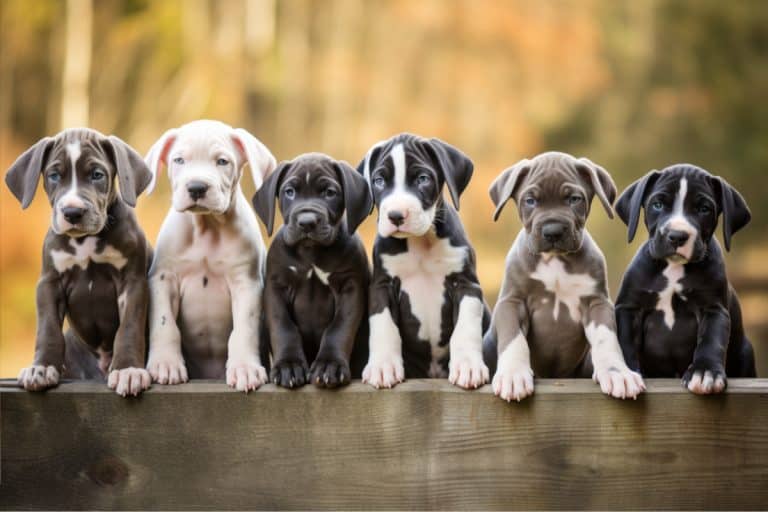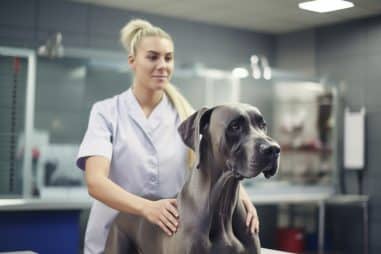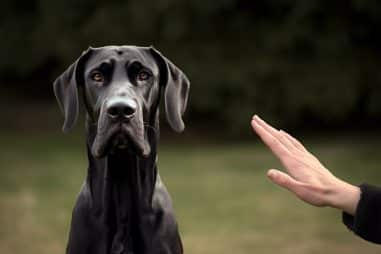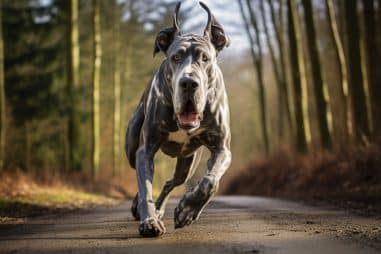Breeding a Great Dane can be a rewarding experience filled with challenges and triumphs. These gentle giants are known for their friendly nature and majestic appearance. If you are planning to breed Great Danes, it’s essential to be well-informed and prepared for what lies ahead. So, let’s dive into the comprehensive steps involved in breeding Great Danes responsibly.
Preparing for Breeding
Selecting the Right Dogs for Breeding
Choosing the right dogs is the foundation of successful breeding. Pay attention to their genetic health, behavioral traits, and physical attributes. For instance, ensure the dogs are free from common genetic disorders like hip dysplasia. A well-mannered temperament is equally important as it’s often passed down to the puppies.
Health Checkups
Routine health checkups are crucial to ensure that both the male and female Great Danes are in prime health. Regular visits to the vet, vaccinations, and de-worming will prepare them for the breeding process.
The Breeding Process
Understanding the Estrus Cycle
Female Great Danes generally have an estrus cycle every six months. Knowing when your female is in heat is crucial for successful breeding.
Choosing the Right Time for Mating
The right time for mating is when the female is in the standing heat phase, which usually lasts for about nine days.
Supervised Matings
Supervised matings can prevent any potential injuries and ensure that the mating process goes smoothly.
Artificial Insemination
If natural mating isn’t successful, artificial insemination is a viable alternative. Consult with your vet to understand the process and benefits.
How Long Are Great Danes Pregnant for?
The gestation period for Great Danes is typically around 63 days, although it can vary by a few days. It’s a relatively short period of just over two months, yet it’s a time of critical growth and development for the puppies. It’s essential to monitor the health of the mother closely during this time, as complications can arise, especially in larger breeds like the Great Dane.
Prenatal Care
Prenatal care is crucial to ensure the health and well-being of both the mother and her unborn puppies. Here are some key aspects:
- Nutrition: A balanced diet rich in protein, fats, and essential nutrients is paramount. Your vet might recommend a high-quality commercial dog food or provide guidelines for a homemade diet, along with any necessary supplements.
- Exercise: Regular, gentle exercise helps maintain a healthy weight, which is important for the mother’s overall health and the healthy development of the puppies. However, as the pregnancy progresses, it’s crucial to keep exercise gentle to avoid any strain or injury.
- Vet Checkups: Regular veterinary checkups will help monitor the health of the mother and the developing puppies. Your vet can also provide advice on any changes to diet or exercise routines as the pregnancy progresses.
- Comfort and Rest: Ensuring the mother has a comfortable, quiet place to rest is important. As her belly grows, she’ll need a comfortable place to lie down, and she’ll likely sleep more.
Preparing for Whelping
As the due date approaches, preparations for whelping should begin:
- Whelping Box: A whelping box provides a safe, enclosed environment for the mother to give birth and care for her puppies. It should be spacious enough for the mother and her puppies but with sides high enough to prevent the puppies from wandering away.
- Signs of Labor: Familiarizing yourself with the signs of labor will help you know when the birthing process is beginning. These signs can include restlessness, nesting behavior, and a drop in body temperature.
- Emergency Preparedness: Have the number of a reputable vet on hand, and be prepared to intervene or seek medical help if necessary during the whelping process.
By providing attentive prenatal care and preparing thoroughly for the whelping process, you can help ensure a successful birthing experience and a healthy start to life for the new puppies. Your vet will be a crucial partner throughout this journey, providing advice, support, and medical care as needed.
How Many Puppies Does a Great Dane Have?
Great Danes typically have litters of about six to twelve puppies, although this can vary. Some litters might have fewer puppies, while others might have more, depending on various factors such as the age and health of the mother, the size of the parents, and the particular genetics involved. It’s not uncommon for Great Danes to have litters of up to fifteen puppies or more, especially if the mother is larger or if larger litters run in her lineage.
The large size of Great Danes contributes to their ability to have larger litters compared to smaller dog breeds. However, caring for a large litter can be quite demanding for the mother, and in some cases, human intervention might be required to ensure that all the puppies are adequately fed and cared for, particularly in the first few critical weeks after birth.
If you’re breeding Great Danes, it’s essential to be prepared for the possibility of a large litter, and to have a plan in place for providing any necessary supplemental care to the puppies. This includes having the necessary supplies on hand, such as milk replacer and bottles, in case some of the puppies require hand-feeding. Additionally, regular checkups with a veterinarian will ensure that the puppies are growing and developing as they should, and can help catch and address any potential health issues early on.
Conclusion
Embarking on the journey of breeding Great Danes is a big responsibility. With the right preparation and knowledge, you can ensure the health and happiness of your dogs and their puppies. Your commitment to responsible breeding will contribute to the betterment of this magnificent breed, bringing joy to other families who get to share their lives with a well-bred Great Dane.








